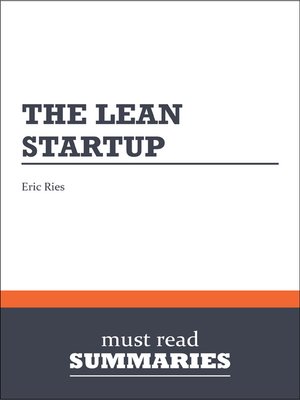

This leaves businesses in other industries, like service or manufacturing, feeling a bit left out. The Build-Measure-Learn feedback loop might not work for every situation, especially for industries that need a lot of time and money to get their products off the ground.Īnother issue is that the book seems to have tunnel vision, focusing primarily on technology startups. For starters, they say the book oversimplifies complex business problems, like trying to fit a square peg into a round hole. Work closely with their IT and deployment teams to develop robust cybersecurity measures, embrace the potential of cloud computing, and leverage data analytics to help them make more data driven decisions.Ĭritics of "The Lean Startup" have a few bones to pick with the book, and they're not just nitpicking. As a technologist, you must be committed to ensuring that organizations stay ahead of the curve in these areas. Moreover, the book sheds light on the importance of cybersecurity, cloud computing, and data analytics in today's business landscape. Continuing the loop until the product or solution meets customer needs and achieves market success.


Iterating the process by making adjustments based on the learnings.Learning from the data and feedback to refine the product, strategy, or hypothesis.Analyzing the data to determine if the hypothesis is validated or refuted.Collecting data on the MVP's performance and user feedback.Launching the MVP to a small group of customers or users.Building the MVP quickly and efficiently.Designing a minimum viable product (MVP) to test the hypothesis.Developing a hypothesis to address the issue or opportunity.Identifying market problems or opportunities.The Build-Measure-Learn feedback loop is a process used to optimize product development by reducing waste and increasing efficiency. This approach enables them to stay ahead of the competition and ensures that projects deliver desired results. By continuously iterating your customers' products and services, they can make data-driven decisions and adjust strategies accordingly. The primary framework of this model, called the Build-Measure-Learn feedback loop, significantly improves the project management process. Here are several key takeaways that can assist customers and prospects in their digital transformation journey. As a technical seller, you should always explore ways to enhance your customers' IT strategies and leverage the latest technology trends to achieve business objectives. This eye-opening book emphasizes the importance of continuous innovation, a concept crucial for creating successful businesses in today's fast-paced world. As a Technical Seller, I came across the book "The Lean Startup" by Eric Ries several years ago.


 0 kommentar(er)
0 kommentar(er)
